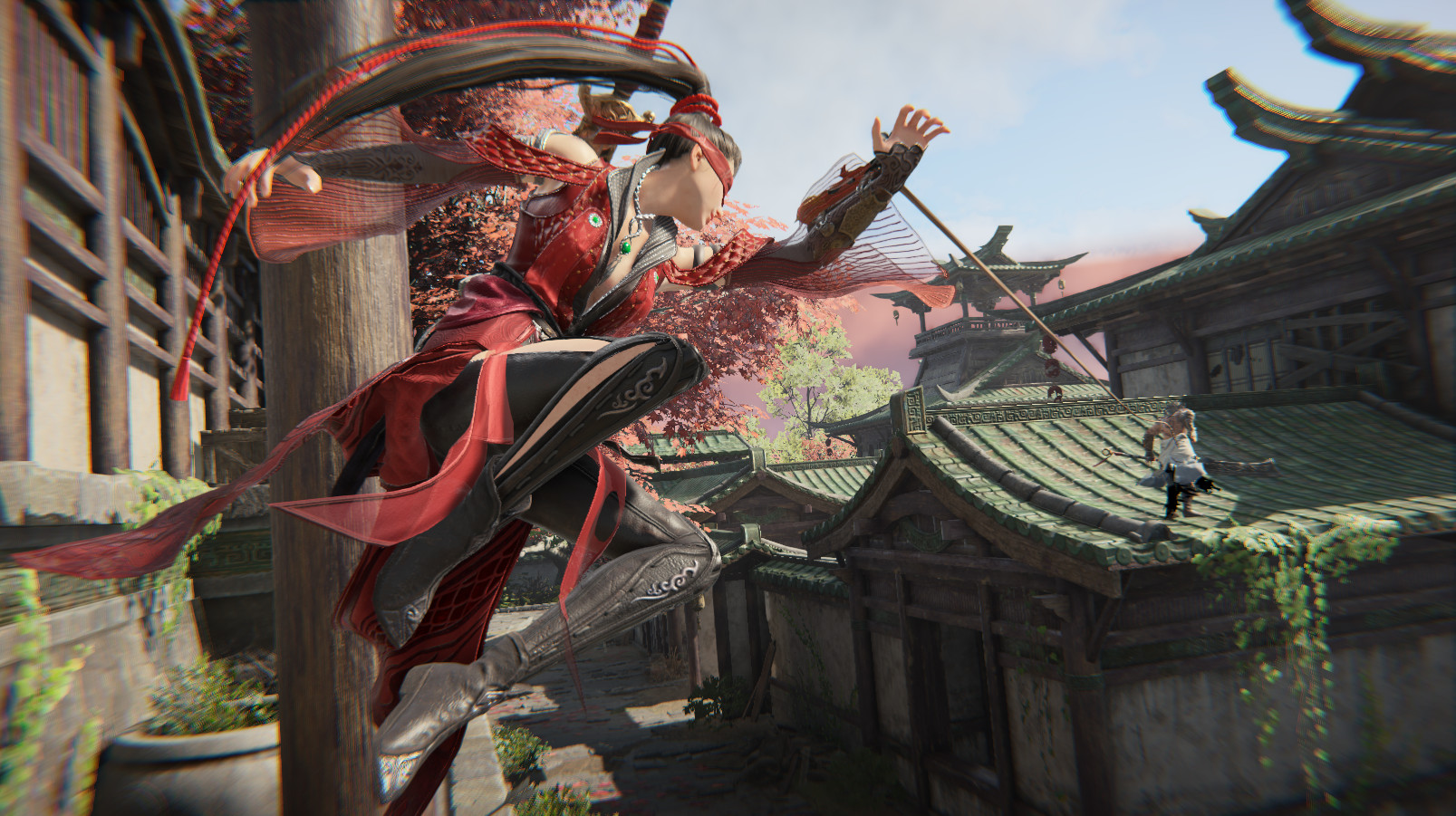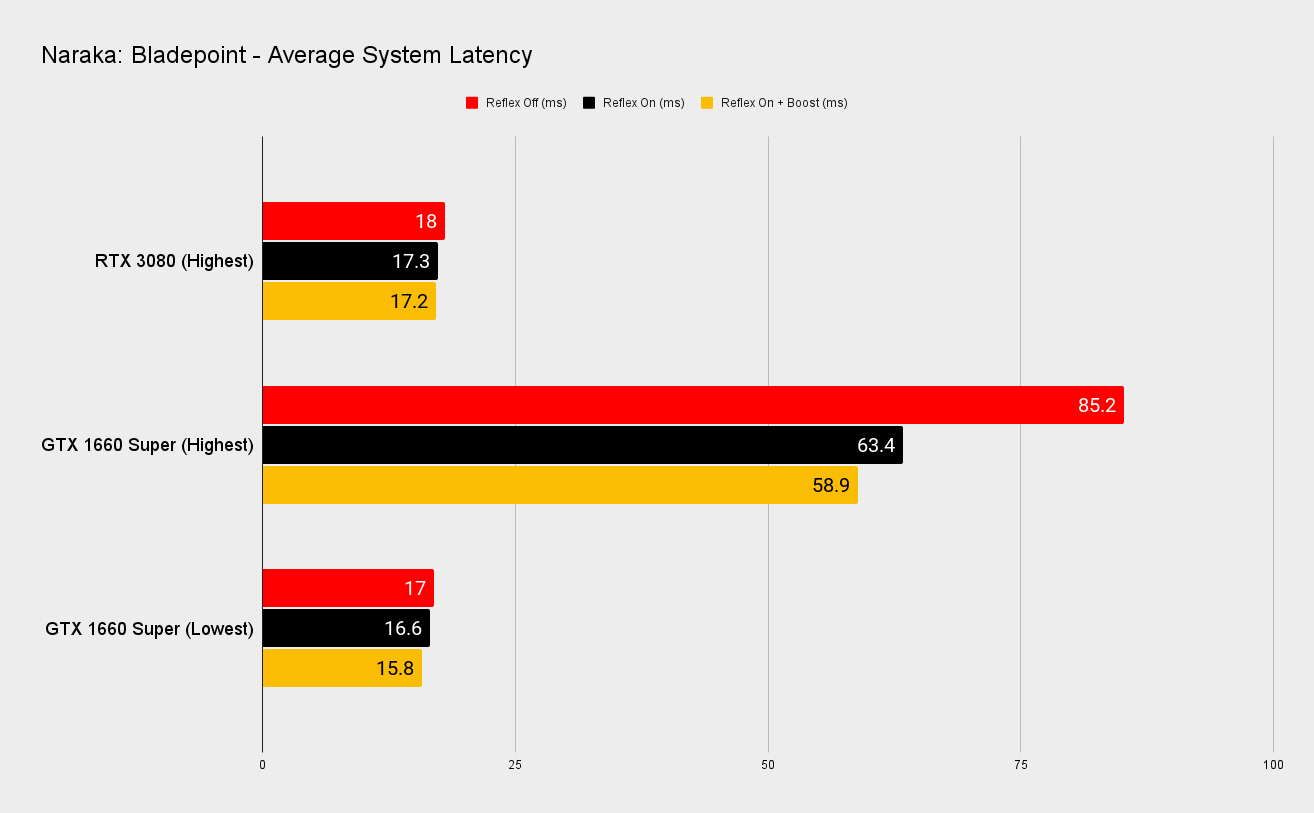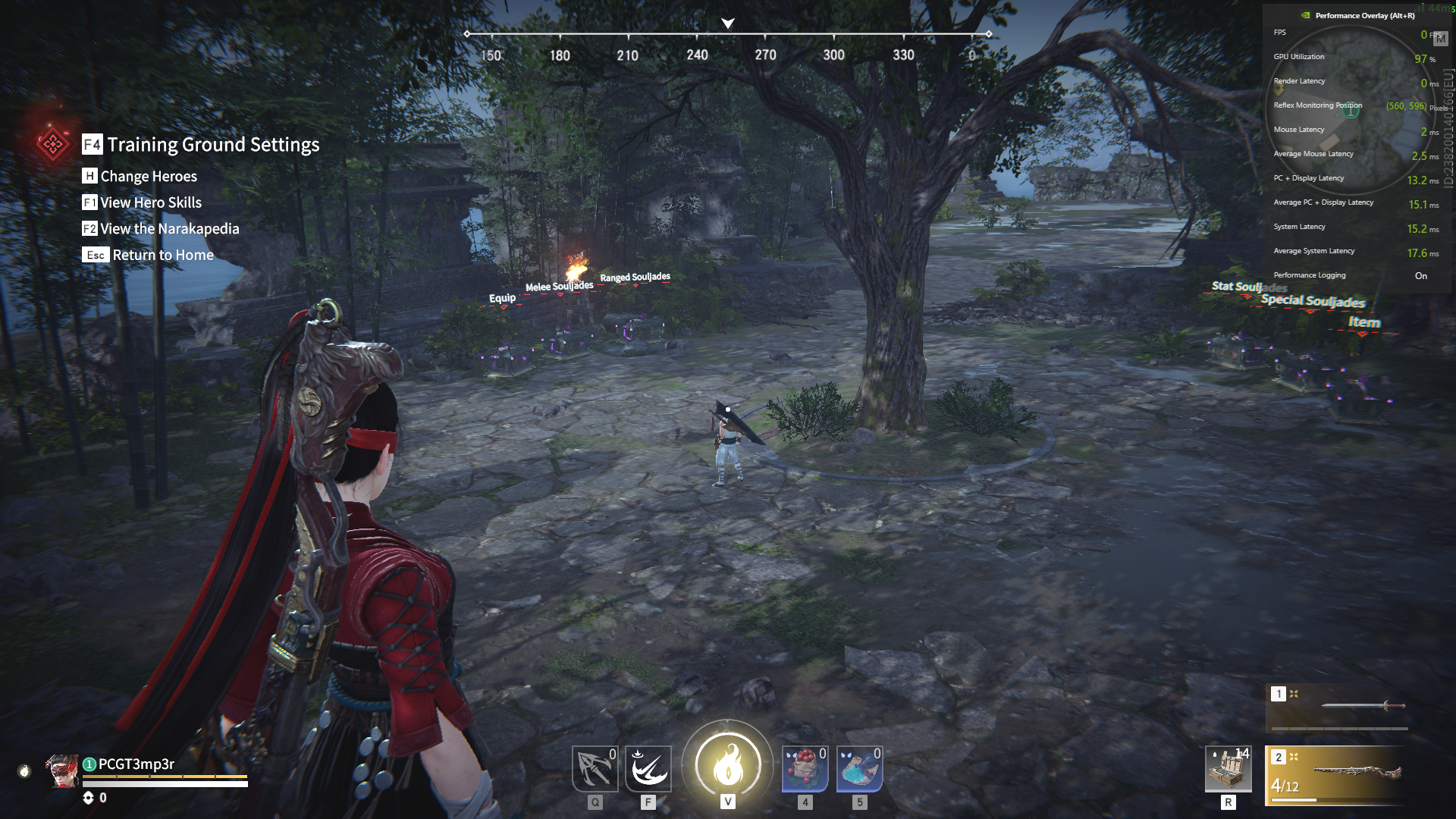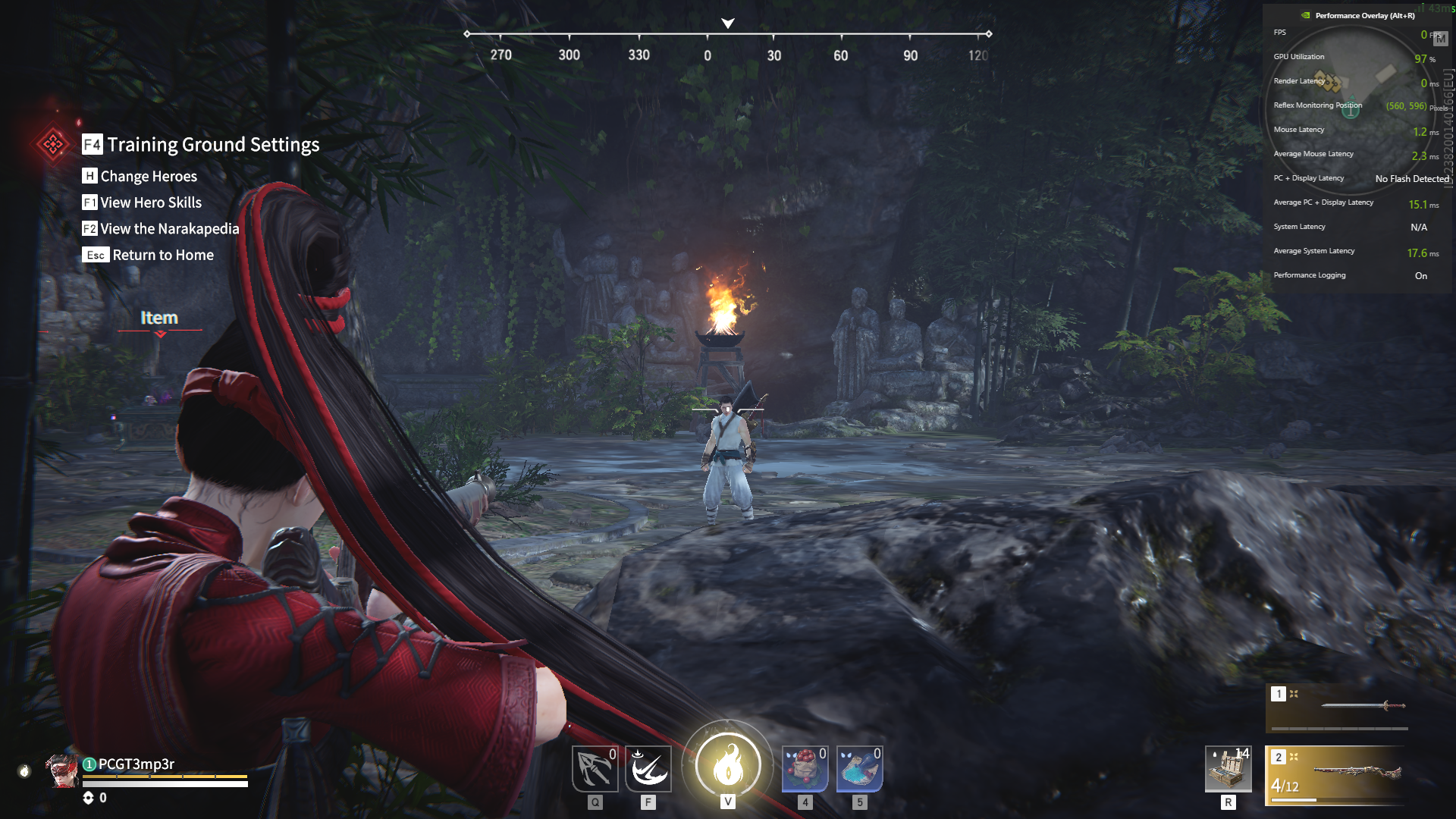Turn on Nvidia Reflex in Naraka: Bladepoint if you're running an older GPU
Lowering system latency is never a bad thing, but how much difference does it make? It's complicated.

Naraka: Bladepoint is the latest game to hit the virtual shelves sporting a selection of Nvidia's technologies. Along with DLSS, it also benefits from Reflex, Nvidia's latency busting tech designed to give you an advantage in game. In fact, Nvidia has been working with developers to get Reflex into plenty of titles, and Naraka: Bladepoint is the 19th game to feature the tech.
But how much difference does it make, and is Reflex a setting you should turn on? I grabbed the testbed (AMD Ryzen 9 5950X, RTX 3080) and the 360Hz Alienware AW2521H with a mind to finding out. This setup also includes the Logitech Pro Wireless, which plugs straight into the Alienware monitor to allow you to measure full system latency.
Measuring latency is a tricky beast, even with the right hardware, as you need an area of the screen to flash after you press a button so that latency can be measured. Naraka: Bladepoint's main trade is melee combat, and the last time I checked swords don't usually produce an explosion of light when used. Thankfully there is some gunplay to enjoy in the game as well, and the game's musket produces a wonderfully over the top explosion every time you fire it. So we're good.
After a quick refresher about measuring and using Nvidia Reflex, I jumped into the training grounds. Grabbing the musket and a whole pile of repair chests (which essentially act as ammo as far as guns are concerned), I set about ascertaining just how much of an impact Reflex can have on a system.
Spoilers: as far as the RTX 3080 is concerned, not a lot.
For Reflex to really have an impact you need to be GPU bound: at 1080p, the RTX 3080 is quite happily throwing around over 200fps at the highest preset. Turning Reflex on improves latency by less than 4%.
The same isn't true when it comes to the GTX 1660 Super though, which struggles to maintain 30fps at the highest settings. Here you absolutely are GPU bound, and this is where you'll see the biggest improvement from turning Reflex on.
Keep up to date with the most important stories and the best deals, as picked by the PC Gamer team.
In testing, you're looking at a 25% improvement to the latency here, and that rises to 30% for going for the Reflex On + Boost option. This will max out your GPU utilization, and thus draw more power, but it does help improve latencies that little bit more.
Of course, you're unlikely to play a competitive Battle Royale at 30fps, even with Reflex on. Dropping down to the very lowest settings at 1080p on the GTX 1660 Super, the framerate jumped up to be more in line with the 3080 at the highest settings—around 200fps. It doesn't look anywhere as good, but it is a much smoother experience.
Of course, the latency drops significantly as well, and you're looking at the situation where the benefits of Reflex are diminished once again—although Reflex On + Boost does improve things here from just over 2% to 7%.
The whole point of Reflex though is that it allows you to up the settings while keeping latency reasonably in check. So some Medium or even High settings should be possible, while also maintaining a smooth and responsive gaming experience.
So, back to the original question: is Reflex a setting you should turn on if you have an Nvidia graphics card? The simple answer is yes, particularly if you're sporting a slightly older card. It should allow you to go for slightly better settings, while also keeping overall system latency low. And better-looking games that are still responsive is obviously where it's at.
Alan has been writing about PC tech since before 3D graphics cards existed, and still vividly recalls having to fight with MS-DOS just to get games to load. He fondly remembers the killer combo of a Matrox Millenium and 3dfx Voodoo, and seeing Lara Croft in 3D for the first time. He's very glad hardware has advanced as much as it has though, and is particularly happy when putting the latest M.2 NVMe SSDs, AMD processors, and laptops through their paces. He has a long-lasting Magic: The Gathering obsession but limits this to MTG Arena these days.





